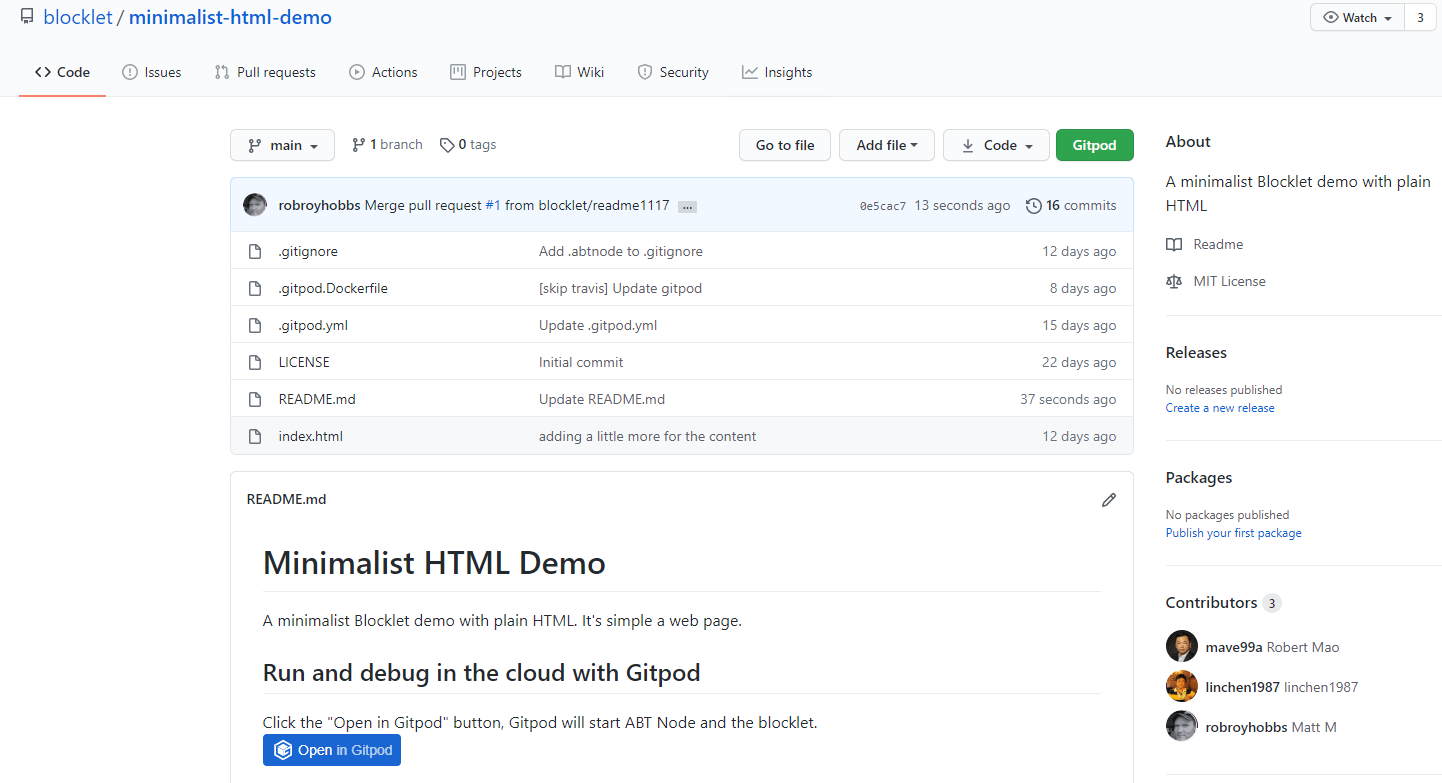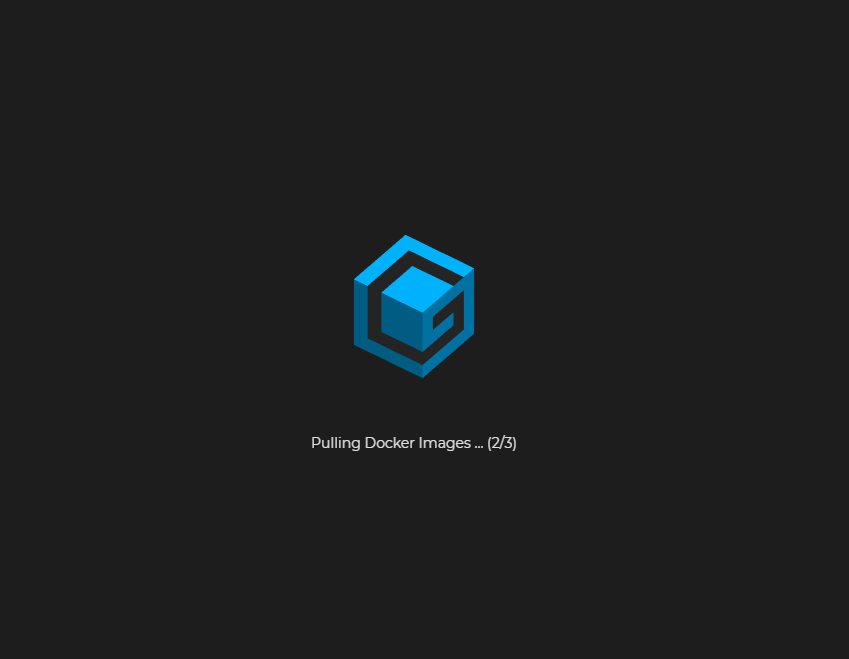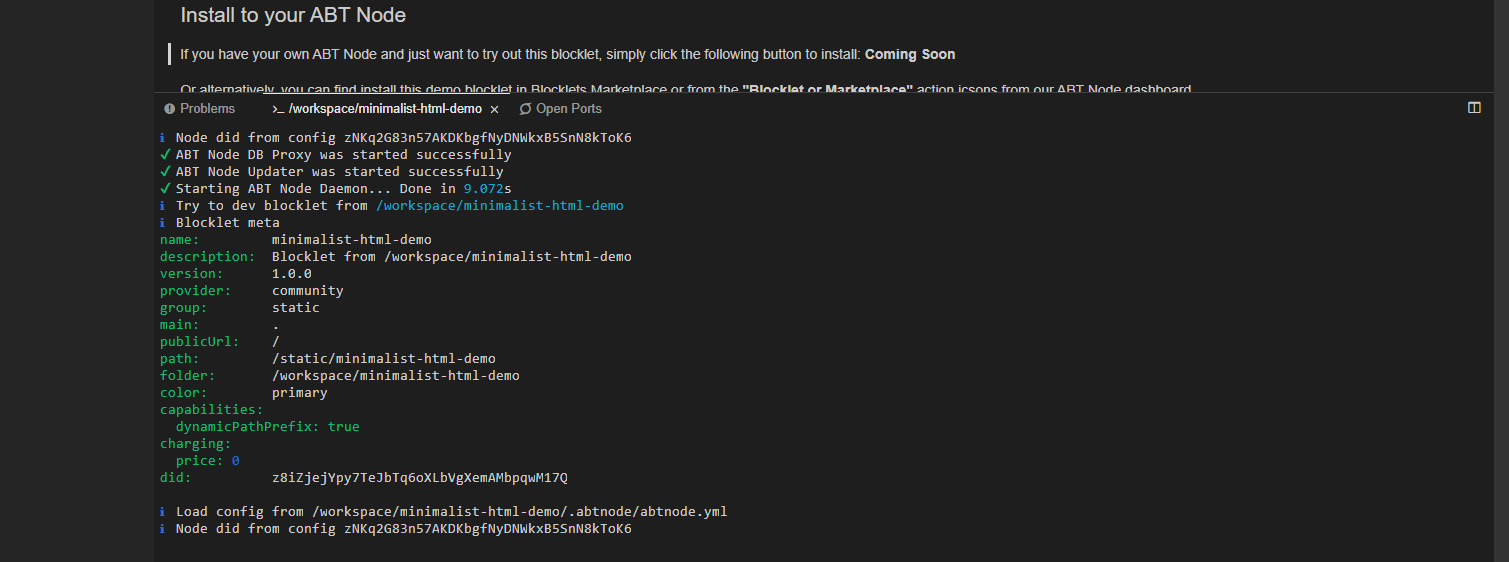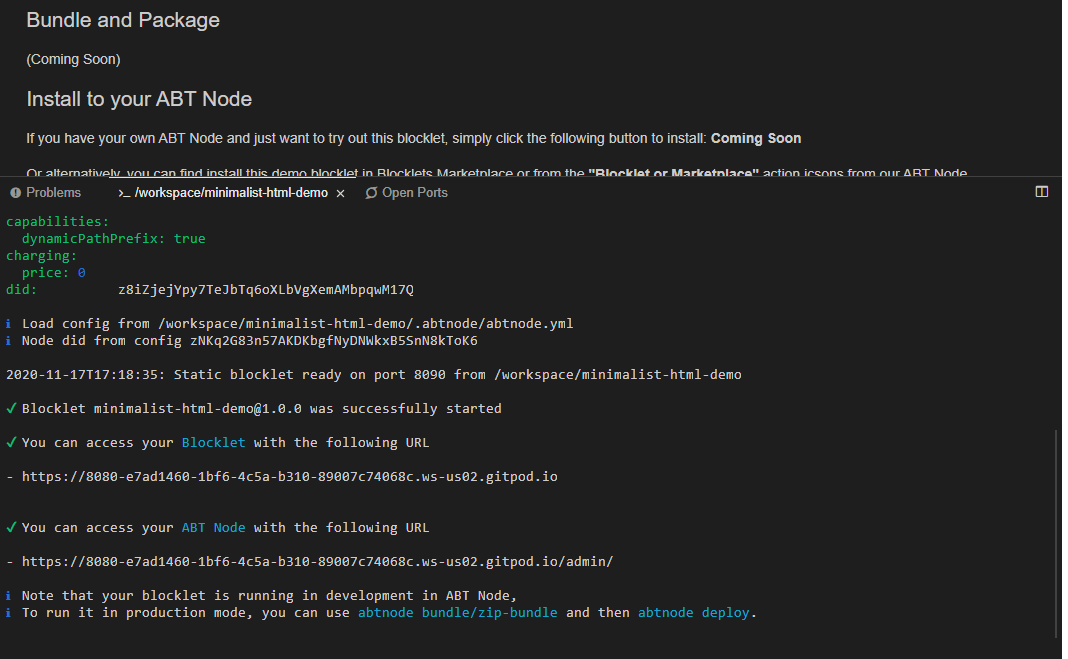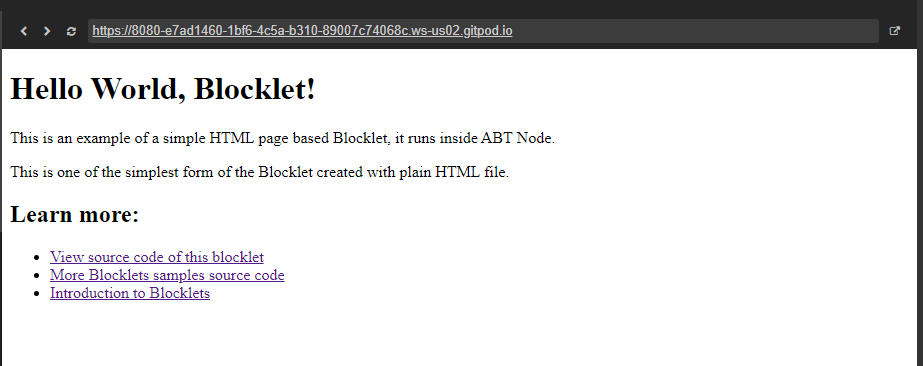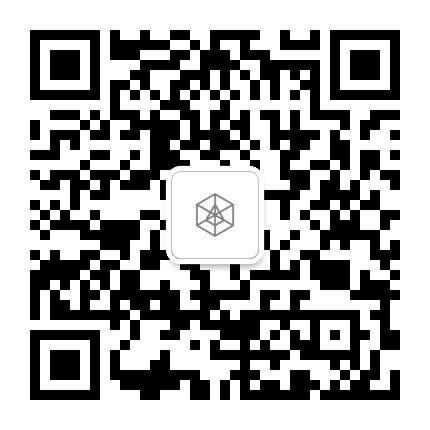Deploy HTML Website Blocklet on ArcBlock
2020-11-17
A walkthrough of how to deploy a simple HTML website using a ready-made Blocklet and ArcBlock's ABT Node.
Deploy a HTML website with ArcBlock
ArcBlock Platform
ArcBlock is one of the most flexible DApp development platforms today and is designed to enable users to easily build, deploy and manage software for their DApp projects including the adoption of other blockchains and DLTs. Moreover, developers can use the languages they are already familiar with.
Get Started with HTML Minimalist Blocklet
Before we start, this demo uses an open source HTML Blocket that is available to anyone and makes it easy to get started with ABT Node in a single click. Simple HTML represents the simplest foundation of any Blocklet and because today's browsers are powerful enough to run pure HTML and JavaScript-based apps, HTML and JS represent the frontend for many services running today.
One of the guiding principles for ArcBlock is ensuring our platform supports a full end-to-end developer experience - from simple to complex including full front-end and back-end support.
Note, Blocklet's provide a consistent and standardized way for developers to quickly use ABT Node and Blocklets to create and deploy technologies (including HTML) for any development project.
In this demo, it is very easy to see how ABT Node makes it easy to launch websites, static pages and any consumer-facing application.
If you visit ArcBlock's website and documentation centers you can see live Blocklets in action. Similar to this demo, each document page and our websites are running Blocklet. Let's get started.
Open in Gitpod
- Click on the Open in Gitpod button and your cloud developer environment will automatically launch in your browser.
- You can see that your Gitpod environment is now setting up and in this case pulling in the necessary Docker images.
- As with any Blocklet there are no dependencies and everything a developer needs to run the service or Blocklet is already included. Blocklets are a powerful way to standardize deployments and tooling that are needed for different components, services and DApps.
- Now, ABT Node is being deployed into debug mode so you can begin playing with the code as soon as the setup is complete. In this step, ABT Node is initialized and started including generating the ABT Node configuration file (abtnode.yml). You can also see that the ABT Node's DID, or decentralized identifier is pulled from the config.
- At this step, our ABT Node and Blocklet have been deployed and your blocklet meta are listed. In this final step, the system will confirm that your static blocklet is ready on port 8090 from /workspace/minimalist-html-demo, and the URLs to access your Blocklet and ABT Node.
- The HTML preview has already been prepared and on the right side of your dev environment, you can see your HTML Blocklet running. Of course, you can simply go into your source files to made edits or additional text to your HTML page.
- Note, for any developer who wants to run their Blocklet in production mode, you can use
abtnode bundle/zip-bundleand thenabtnode deploy - We've seen how easy it is to deploy a static site using ArcBlock's ABT Node and ready-made Blocklets. For anyone interested in trying another Blocklet, and seeing how ABT Node can support other platforms, check out our Solid on ArcBlock demo and deploy Inrupt's Solid Server using the Solid on ArcBlock Blocklet. Similar to the HTML demo, these Blocklets are open source and please feel free to make improvements or try other Blocklets including React, static sites and more.
Building DApps, Blockchains and DLTs has never been easier. Get started today.
